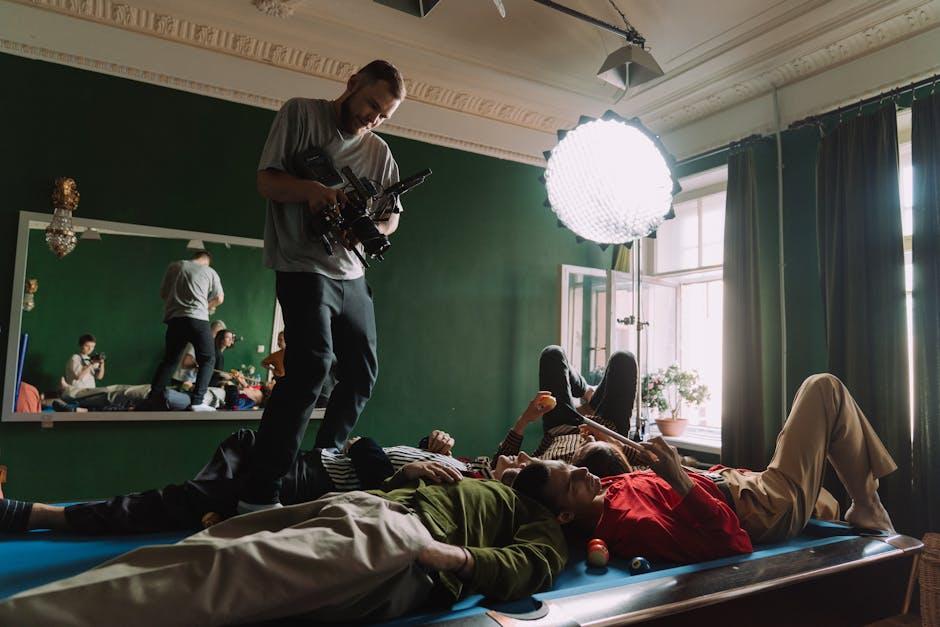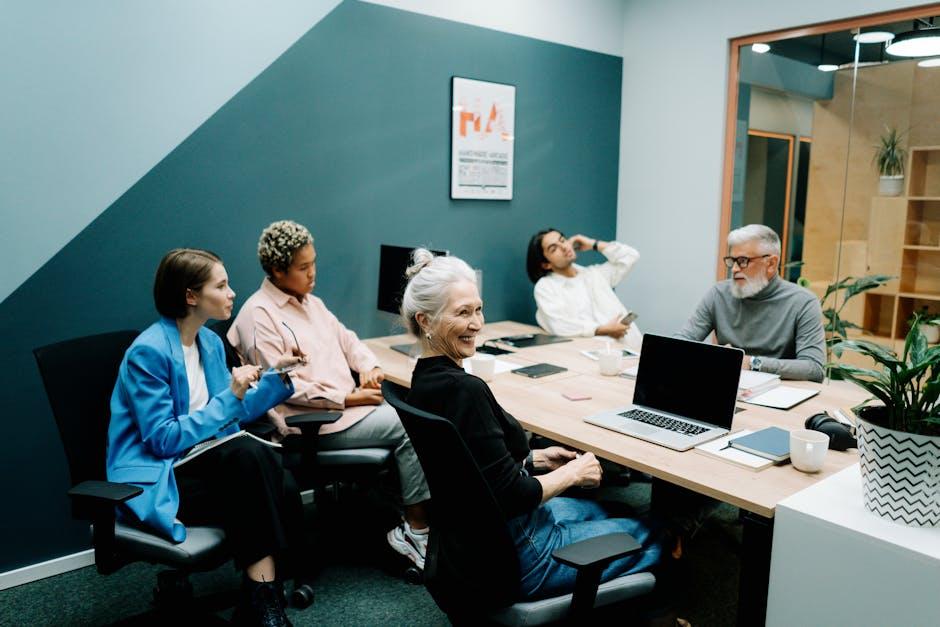In the intricate tapestry of filmmaking, the director stands as a pivotal force, orchestrating the delicate interplay between vision and execution. At the heart of this creative symphony lies the director’s collaboration with screenwriters and actors—a dynamic relationship that shapes the narrative and breathes life into characters. This article delves into the multifaceted role of the director, examining how their leadership and creative synergy with writers and performers not only drive a film’s success but also elevate the storytelling process to new heights. By analyzing these collaborations, we uncover the nuanced strategies directors employ to harmonize diverse talents, ultimately transforming a script into a compelling cinematic experience.
Understanding the Director-Screenwriter Dynamic: Crafting a Unified Vision
The synergy between a director and a screenwriter is pivotal in transforming a script into a visual masterpiece. This partnership is built on a foundation of trust and communication, where the director’s vision aligns seamlessly with the writer’s narrative intent. Effective collaboration often involves regular discussions, script readings, and workshops, allowing both parties to explore character motivations and story arcs in depth. The director’s role is to interpret the script, suggesting adjustments that enhance cinematic storytelling while respecting the writer’s original voice.
To craft a unified vision, directors often employ strategies such as:
- Storyboarding sessions: Visualizing scenes to ensure the script’s themes are accurately represented.
- Character development workshops: Engaging with actors and writers to delve into character backstories and relationships.
- Feedback loops: Establishing open channels for continuous dialogue, allowing for iterative improvements.
By fostering a collaborative environment, directors not only honor the script’s integrity but also inspire actors to bring their characters to life, culminating in a cohesive and compelling film experience.

Facilitating Actor Engagement: Techniques for Authentic Performances
Directors play a pivotal role in ensuring that actors deliver authentic performances, fostering a collaborative environment that encourages creativity and depth. One effective technique is the creation of detailed character backstories. By working closely with screenwriters, directors can provide actors with rich, nuanced backgrounds that inform their character’s motivations and actions. This collaborative effort not only enhances the script but also empowers actors to inhabit their roles more fully.
Another crucial aspect is the use of rehearsal techniques that prioritize improvisation and exploration. Directors can facilitate workshops where actors are encouraged to experiment with their characters in unscripted scenarios, allowing for spontaneous moments of genuine emotion. This approach can be complemented by feedback sessions where directors and actors discuss these experiences, fostering a deeper understanding of the character’s journey. By integrating these techniques, directors create a dynamic space where actors feel valued and inspired to deliver their best work.
Balancing Creative Input: Strategies for Harmonious Collaboration
In the dynamic world of filmmaking, a director’s ability to harmonize creative inputs is crucial. By fostering an environment where screenwriters and actors feel valued and heard, directors can unlock the full potential of a collaborative project. Here are some effective strategies:
- Active Listening: Directors should engage in active listening, ensuring that each collaborator’s ideas are acknowledged and considered. This not only builds trust but also inspires a more cohesive vision.
- Clear Communication: Establishing clear communication channels helps in aligning everyone’s understanding of the project’s goals. Regular feedback sessions can aid in refining concepts while maintaining the integrity of the original script.
- Flexibility and Adaptation: Encouraging flexibility allows the creative process to evolve organically. Directors who adapt to new ideas can integrate diverse perspectives, enriching the narrative and character development.
By balancing creative input, directors can ensure that both the script’s essence and the actors’ interpretations come to life in a way that resonates with audiences.

Navigating Challenges: Effective Communication in the Creative Process
In the intricate dance of filmmaking, a director acts as the linchpin, harmonizing the creative visions of screenwriters and actors. This role demands a nuanced understanding of each party’s needs and strengths. By fostering open dialogue, a director can align the screenwriter’s narrative intentions with the actors’ interpretations, ensuring the story is both authentic and compelling. Effective communication here isn’t just about clarity—it’s about creating a space where creative ideas can be challenged and refined.
- Active Listening: Directors must absorb feedback and suggestions, demonstrating genuine interest in collaborators’ perspectives.
- Vision Sharing: Articulating a clear vision helps bridge the gap between script and performance, ensuring all team members are on the same page.
- Adaptive Strategies: Flexibility allows directors to adjust approaches based on the evolving dynamics of the team, fostering a more cohesive creative environment.
By embodying these principles, directors not only guide but also inspire, nurturing a collaborative atmosphere where creativity can thrive.

